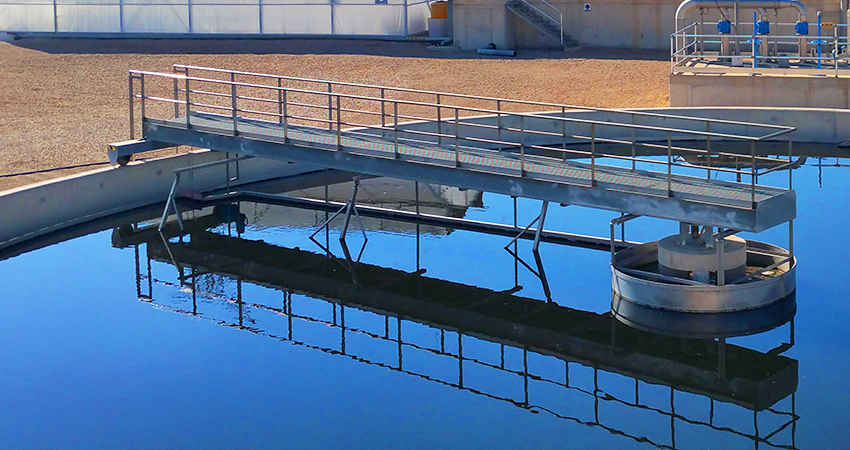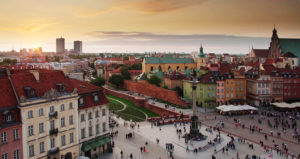European water sector stands out in diversity

-
 Editorial Team
Editorial Team
Share article:
The European water sector is providing water services for a population of nearly 450 million in 27 European countries. The European water sector is large and complex with many different stakeholders.
What does the European water sector look like?
The European water sector is made up of water utilities, national and regional governments, research institutes, professional and trade associations, international organisations, and the private sector. Sometimes water utilities are publicly owned, sometimes privately. Nowadays, more and more water services are delivered by public-private partnerships. Think of Design, Build, Finance and Operate Contracts (DBFO). Thanks to these partnerships investments in water infrastructure or new technologies are feasible.
The European Union (EU) is a major driver of water policies and legislation, with the European Commission playing a major role. European water policies cover the use of water resources, wastewater treatment, drinking water quality, and flood and environmental protection.
The European water sector is highly regulated, with the European Water Framework Directive (WFD) as a cornerstone. The WFD sets out the main principles for integrated water management, such as the protection of water resources, the prevention of water pollution, and the promotion of a sustainable water sector.
In recent years, the European water sector has seen an increasing focus on sustainability and innovation. Smart solutions and advanced technologies play an important role in the European water sector, helping to improve the efficiency and effectiveness of water management. In addition, the sector is increasingly looking to renewable energy sources.
How many people are working in the European water sector?
It is difficult to provide an exact number as the European water sector is made up of a variety of different organisations, including governments, regulators, utilities, trade associations, and research institutes. However, Eurostat says the water supply, sewerage, waste management and remediation activities sector employed more than 1.5 million people in the EU in 2019.
How many companies are operating in the European water sector?
The water sector in Europe is made up of a wide range of companies, ranging from small, local businesses to large multinationals. According to Eurostat the water supply, sewerage, waste management and remediation activities sector accounted for 77 000 enterprises in 2019.
Which European Water organisations are active in the European water sector?
There are many European water organisations. Most of them are based in Brussels and represent a specific group of companies or they are working on specific topics. We are mentioning some of them, but we also realise this list is not complete.
Water Europe envisions a Water-Smart Society in which the true value of water is recognised and realised, and all available water sources are managed in such a way that water scarcity and pollution of water are avoided.
The European Water Association (EWA) is an independent non-governmental and non-profit making organisation dealing with the management and improvement of the water environment.
International Commission for the Protection of the Danube River
The International Commission for the Protection of the Danube River (ICPDR) works to ensure the sustainable and equitable use of waters in the Danube River Basin. The work of the ICPDR is based on the Danube River Protection Convention (DRPC), the major legal instrument for cooperation and transboundary water management in the Danube River Basin.
The European Environment Agency provides sound, independent information on the environment for those involved in developing, adopting, implementing and evaluating environmental policy, and also the general public.
EurEau members supply 500 million people with 44.7 billion m³ of clean drinking water annually, while 450 million people are connected to a waste water collection network and 435 million people are connected to one of over 18.000 waste water treatment plant.
Aqua Publica Europea (APE) is the European Association of Public Water Operators. It unites publicly owned water and sanitation services and other stakeholders working to promote public water management at both European and international level. APE is an operator-led association that looks for efficient solutions that serve public interests rather than corporate ones.
The European Junior Water Programme is developed to help ambitious young water professionals with their career. During the programme they are able to develop an international network in the water sector.
EurAqua is the European Network of Freshwater Research Organisations. The aim of EurAqua is to contribute substantially to the development of European freshwater science and technology and its dissemination on a European scale, thus having a significant input on the development of the scientific and economic basis of European water management.
European Irrigation Association
The European Irrigation Association promotes the continued development of products, practices and services in irrigation, and to advocate for sustainable industry standards and water management policies that lead to a stable legal environment for irrigation professionals
RiverWatch is a society for the protection of rivers. RiverWatch draws attention to the value of rivers; their beauty and their importance to flora and fauna, as well as to humans. They engage globally against destructive projects, particularly dams, and promote public awareness through campaigning.
What are the main European water directives?
Water Framework Directive
The Water Framework Directive sets out rules to halt deterioration in the status of EU water bodies and achieve good status for Europe’s rivers, lakes and groundwater. The Member States are preparing River Basin Managament Plans that they have to implement before 2027.
Read more
Drinking Water Directive
he recast Drinking Water Directive will further protect human health thanks to updated water quality standards, tackling pollutants of concern, such as endocrine disruptors and microplastics, and leading to even cleaner water from the tap for all.
Read more
Bathing Water Directive
The EU bathing water directive specifies if bathing water quality can be classified as ‘excellent’, ‘good’, ‘sufficient’ or ‘poor’, depending on the levels of faecal bacteria detected. Where water is classified as ‘poor’, EU countries should take certain measures, such as banning bathing or advising against it, providing information to the public, and taking suitable corrective actions. These rules have led to a drastic reduction of untreated or partially treated municipal and industrial wastewater ending up in bathing water.
Read more
Groundwater Directive
The Groundwater Directive sets groundwater quality standards and introduces measures to prevent or limit pollutants in groundwater. It establishes quality criteria, allowing for further improvements to be made based on monitoring data and new scientific knowledge. The directive represents a proportionate and scientifically sound response to the requirements of the WFD as it relates to assessments on chemical status of groundwater and the identification and reversal of significant and sustained upward trends in pollutant concentrations.
Read more
- Innovative approaches to save groundwater are essential
- Czech republic has to comply with EU-rules on groundwater protection
Floods Directive
The Floods Directive aims to manage the risks floods pose to human health, the environment, the economy and cultural heritage. EU countries are required to create and update Flood Hazard Maps and Flood Risk Maps. Flood Hazard Maps should cover the geographical areas which could be flooded and Flood Risk Maps show the potential adverse consequences associated with these flood scenarios. These maps form the basis for the drafting of flood risk management plans.
Read More
- Commission warns six Member States for failures to update flood risk maps
- Venice flooded again due to failing procedure
Nitrates Directive
The Nitrates Directive aims to protect water quality across Europe by preventing nitrates from agricultural sources that pollute ground and surface waters and by promoting the use of good farming practices.
Read more
- EC wants stricter measures to enforce Nitrates Directive
- Danish study: Nitrate in drinking water increases risk colorectal cancer
Urban Waste Water Treatment Directive
The Urban Waste Water Treatment Directive (UWWTD) sets the requirements to discharges from urban waste water treatment plants to sensitive areas. The EC came with a proposal for a revised Urban Wastewater Treatment Directive in October 2022. According to the Commission stricter rules and tertiary treatment are necessary.
Read more
- EC presents proposal revised urban wastewater directive
- EC refers Spain to Court for not complying with Urban Waste Water Directive
Marine Strategy Framework Directive
The aim of the European Union’s ambitious Marine Strategy Framework Directive is to protect more effectively the marine environment across Europe.
Read more
Water Reuse Directive
The Regulation on minimum requirements for water reuse for agricultural irrigation entered into force in June 2020. The new rules will apply from 26 June 2023 and are expected to encourage and facilitate water reuse in the EU.













